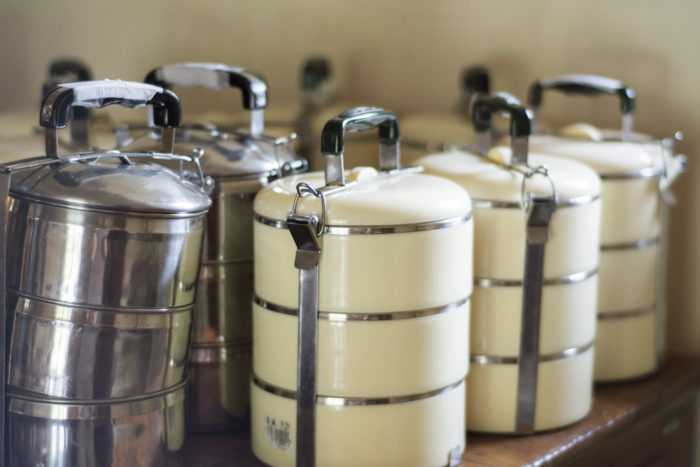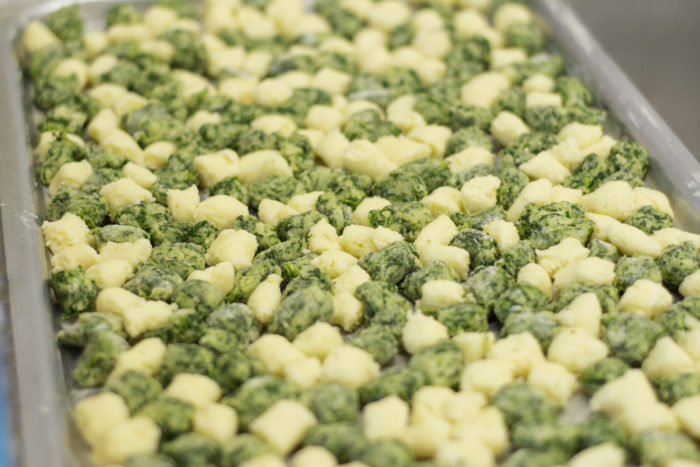The Kitchen
At Civitella, we believe ‘we are what we eat.’ We are dedicated to the pleasures of well-prepared, and well-presented food. Our food program is central to our Foundation’s identity, and to the health and well-being of our Fellows and guests.
We take seriously the responsibility of protecting our local identity of Umbrian and Tuscan food traditions while exploring international trends and influences. We support local farmers and makers of cheese, wine, meat, eggs, flour, and olive oil. Whenever possible, we travel no more than 50 kilometers to secure the best and healthiest products available, and source nearly all of our produce from a biologically sound on-site garden. An ethical food program is the core of our program, identity, and the health, education, and joy of our Fellows and Guests.



Debora Ventanni became Civitella’s head chef in 2025, succeeding Romana Clubini, who retired at the end of 2024 after 26 years at Civitella. Debora came to Civitella after serving as sous chef at notable restaurants in the region. Surrounded by art since birth, she has always sought experiences that completely engage her emotions and senses. Her inventive and creative cuisine is grounded in an appreciation of local Umbrian traditions and ongoing exploration of food. Committed to chilometro zero cooking, she collaborates closely with Marco Alunni, Civitella’s gardener, to make the most of Civitella’s abundant orto (vegetable garden) and frutteto (orchard). Debora is assisted by Patrizia Caini and Alice Alunni.
“Mushroom hunting that drives the whole nation crazy from July to September is one of peculiarities and cornerstones of Latvian national identity. At Civitella, under the influence of local truffles I created a proposal for the upcoming solo-show… an artist who has found these spores for years tries to infect himself and to become a genius.“
Gardens
The gardens at Civitella Ranieri are open to the public by appointment. If you would like to visit the gardens you must register at least one week in advance by writing to: diego@civitella.org. As we work with a very small staff, lead time to arrange a visit is appreciated.
The secret garden on the site of the old ‘orto’ will be next, which includes terraces where the slopes have been planted as borders with perennial plants and shrubs including roses. The most recent planting has given emphasis to English and Classic roses as well as to Mediterranean plants, especially those that are aromatic.
There are two examples of raised beds at Civitella: a two tiered brick structure (nicknamed ‘ara pacis’ which contains the kitchen herbs on the edge of the Gazebo garden), and the main vegetable garden that has been laid out in the Medieval Monastic style. While much of the planting of the garden is recent, most of the structure and relationship between the gardens within the Castle walls remains, for the most part, unchanged since the early part of the 19th century.
“For a while, Umbria brimmed green, true to its name il cuore verde (the green heart). Olive trees, far tobacco fields, dark poplars. On the castle grounds: Rosemary sprigs, young lettuce, olio nuovo. Stinkbug green, lizard green. Through the region: Piero della Francesca green. Umbrian hill and harvest green. Civitella Ranieri green. I’d kept a running list of the different casts of light, the green nearing gold, the green darkening. More than 70% of the land is hilly, covered in trees and forest.“
“Civitella is the kind of place I dreamed of as a child: an ancient and battle-scarred fortress in an impossibly glorious landscape, seething with birdsong and history. I saw right away, when we arrived, that the boy in me had found a paradise. But it’s also the kind of place I dreamed of as a young man, as a writer just beginning his career: an assembly of unique and strange and brilliant minds, at a remove from the distractions and stressors of their lives in the world, for no other reason than to work and reflect and be delighted and astonished by each other. If anyone had told me, while I was writing my first book, that I’d be given the opportunity to spend six weeks in such a place, I’d have fallen out of my chair. Both the writer and child in me are deeply grateful.”